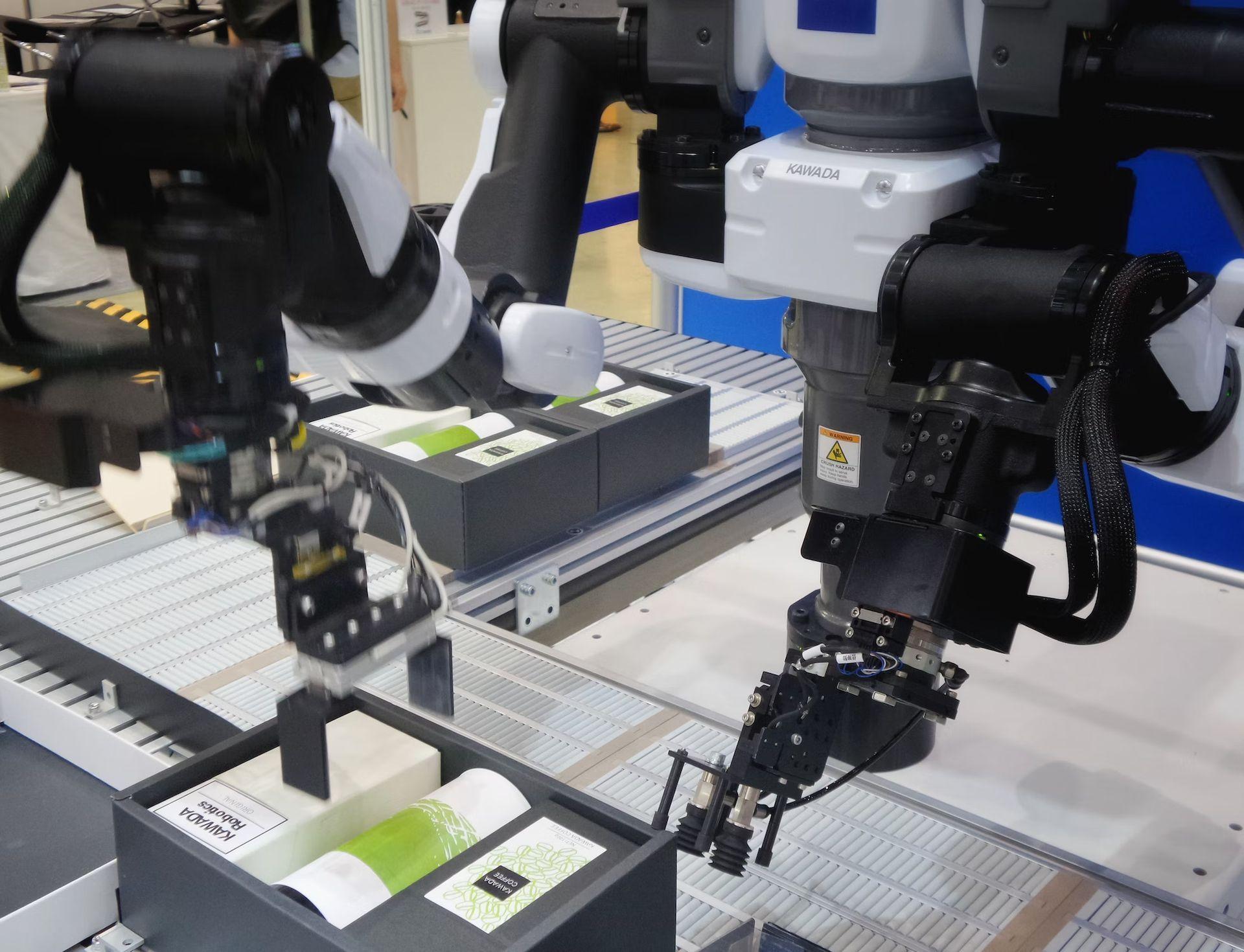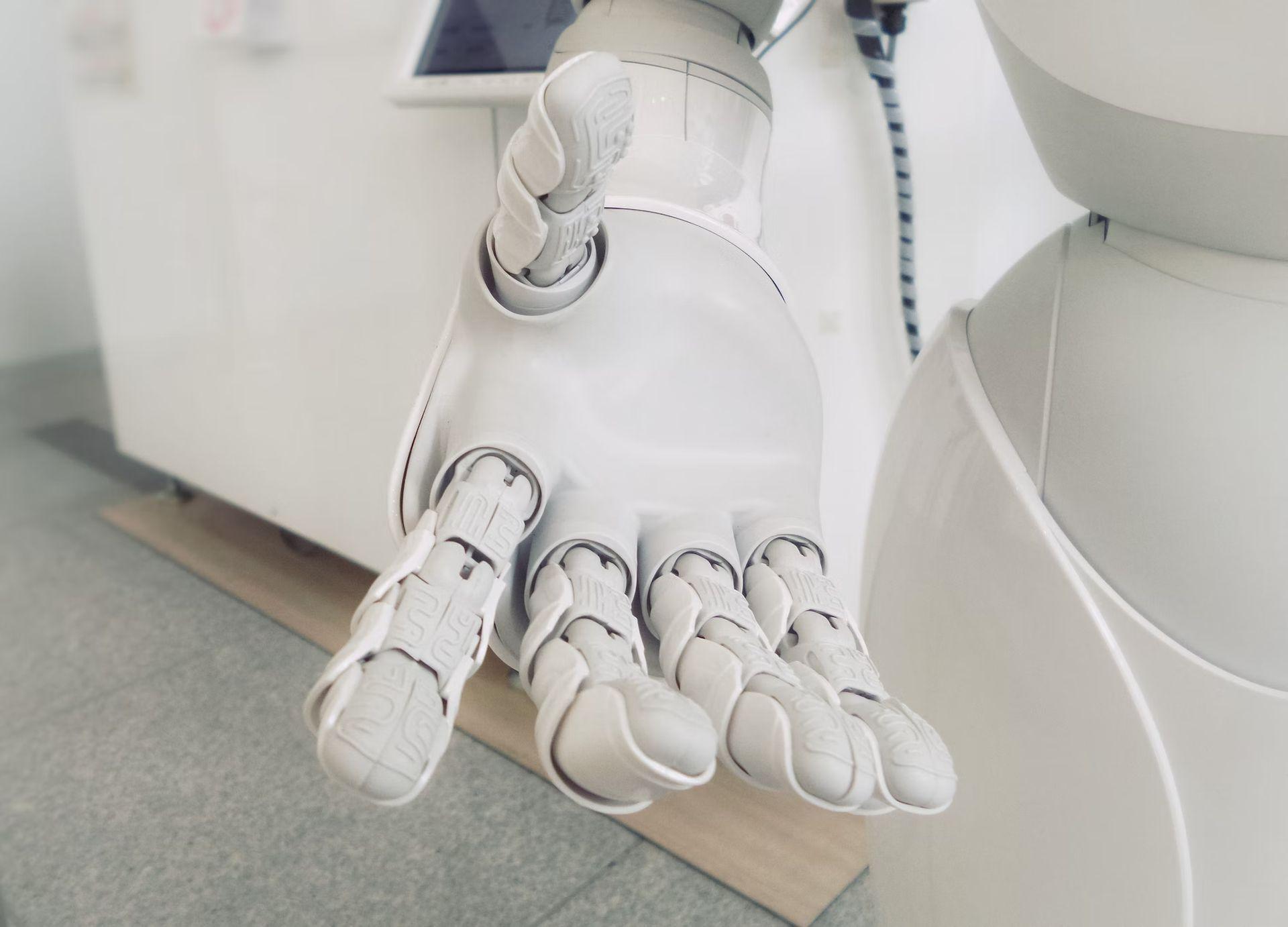Smart robotics is playing a significant role in the growth of industrial automation. The integration of advanced technologies such as artificial intelligence, machine learning, and the Internet of Things into robots has made them more autonomous, adaptable, and intelligent. This has enabled them to sense, perceive, and respond to their environment and perform tasks that were once considered impossible.
One of the main benefits of smart robotics in industrial automation is increased efficiency. Smart robots can perform tasks faster, more accurately, and with greater precision than humans, resulting in increased productivity and output. They can also automate tasks that are repetitive, dangerous, or difficult for humans, freeing up human resources for more complex and valuable tasks.
Another benefit of robotics in industrial automation is cost savings. Smart robots can reduce labor costs and improve efficiency, resulting in cost savings for businesses. They can also operate in hazardous environments or perform tasks that are dangerous for humans, improving safety for employees.
Smart robotics also enables the implementation of Industry 4.0 and the Internet of Things (IoT) in the manufacturing process. Through the use of IoT devices and sensors, robots can communicate and share data with other machines and systems in the factory, creating an interconnected and automated production line.
In summary, robotics is flourishing industrial automation growth by increasing efficiency, reducing costs, improving safety, and enabling the implementation of Industry 4.0. As technology continues to evolve, we can expect to see even more breakthroughs and innovations in the field of industrial automation in the future.

What is smart robotics?
In recent years, the field of robotics has seen significant advancement with the emergence of robotics. But what exactly is smart robotics? In simple terms, smart robotics refers to the integration of advanced technologies, such as artificial intelligence, machine learning, and the Internet of Things, into robots to make them more autonomous, adaptable, and intelligent. This integration enables robots to sense, perceive, and respond to their environment and perform tasks that were once considered impossible.
The significance of robotics cannot be overstated. It has the potential to revolutionize various industries by increasing efficiency, reducing costs, and improving safety and accuracy. From manufacturing to healthcare, smart robotics has found its way into several sectors, improving the quality of life and enhancing overall productivity. With the advancements in technology and the increasing demand for automation, smart robotics is set to play a significant role in shaping the future. In this article, we will delve deeper into the definition, advancements, applications, benefits, potential, and challenges of smart robotics.
The latest developments in smart robotics
The field of smart robotics is continuously evolving, with new advancements and innovations being made every day. Some of the latest developments in smart robotics include:
Autonomous robots
Robots that can operate independently without human intervention. They can navigate, make decisions, and execute tasks based on their programming and the information they gather from their environment.
Collaborative robots
Robots that can work alongside humans in a safe and efficient manner. They are designed to assist humans in tasks and can be easily integrated into existing processes and operations.
Deep learning
The integration of deep learning algorithms into robots enables them to learn and adapt to new tasks and environments.

Human-robot interaction
The development of more sophisticated and intuitive interfaces enables robots to communicate and interact with humans in a natural and effective way.
Cloud robotics
The use of cloud computing enhances the capabilities of robots by providing them with access to vast amounts of data and computational resources.
5G connectivity
The integration of 5G technology in robots enables them to communicate and transfer data faster, making them more responsive and efficient.
These are just a few examples of the many advancements being made in the field of robotics. As technology continues to evolve, we can expect to see even more breakthroughs in the near future.
Applications of smart robotics
Smart robotics has found its way into various industries, improving the quality of life and enhancing overall productivity. Some of the most notable applications of smart robotics include:
- Manufacturing: Robotics is being used in manufacturing to improve efficiency and reduce costs. They are used for tasks such as assembly, welding, and packaging and can work in environments that are hazardous or difficult for humans.
- Healthcare: Smart robotics is being used in healthcare to assist surgeons in complex procedures, assist patients with mobility, and automate laboratory tasks.
- Agriculture: Robotics is used in agriculture to improve efficiency and reduce labor costs. They can be used for tasks such as planting, harvesting, and monitoring crop growth.
- Service sector: Smart robotics is being used in the service sector to automate tasks such as cleaning, customer service, and security.
- Transportation: Robotics is being used in transportation to increase efficiency, reduce costs and improve safety. They can be used for tasks such as loading and unloading cargo and autonomous vehicles.
- Construction: Smart robotics is used in construction to increase efficiency, reduce costs, and improve safety. They can be used for tasks such as building inspection and heavy equipment operation.

Benefits of smart robotics
The integration of advanced technologies into robots has brought about numerous benefits, making smart robotics an attractive solution for various industries. Some of the main benefits of robotics include:
Increased efficiency
Smart robotics can perform tasks faster, more accurately, and with greater precision than humans, resulting in increased productivity and output.
Automation
Robotics can automate tasks that are repetitive, dangerous, or difficult for humans, freeing up human resources for more complex and valuable tasks.
The intersection of technology and engineering: Automation engineers
Cost savings
Smart robotics can reduce labor costs and improve efficiency, resulting in cost savings for businesses.
Improved safety
Robotics can operate in hazardous environments or perform tasks that are dangerous for humans, improving safety for employees.
24/7 operation
Smart robotics can operate 24/7 without stopping, increasing the overall production output.
Flexibility
Robotics can be programmed to perform multiple tasks, increasing the flexibility of the system.
Scalability
Smart robotics can be easily scaled up or down depending on the needs of the business, making it a cost-effective solution.
These benefits have not only made robotics an attractive solution for various industries but also have made them a key player in shaping the future.

The future of smart robotics and its possibilities
The advancements in smart robotics have opened up a world of possibilities, and the potential of this technology is enormous. Some of the areas where smart robotics is expected to have a significant impact in the future include:
- Artificial intelligence: The integration of artificial intelligence into robotics will enable them to perform more complex tasks, learn and adapt to new environments, and make decisions independently.
- Internet of Things: The integration of IoT technology into robotics will enable them to connect and communicate with other devices and systems, making them even more autonomous and adaptable.
- Human-robot collaboration: The development of more sophisticated and intuitive interfaces will enable robots to collaborate with humans in a natural and effective way.
- Autonomous vehicles: Smart robotics will play a major role in the development of autonomous vehicles, making transportation safer and more efficient.
- Smart cities: Robotics will be used to improve the functionality and efficiency of smart cities, from infrastructure maintenance to emergency response.
- Space exploration: Robotics will be used to explore space and perform tasks that are too dangerous or difficult for humans.
Challenges and opportunities of smart robotics
As with any new technology, there are challenges and opportunities associated with smart robotics. Some of the key challenges include:
- Ethical concerns: Robotics has the potential to disrupt the job market and raise ethical concerns, such as privacy, surveillance, and bias.
- Social impact: Smart robotics has the potential to impact society in ways that are not yet fully understood, such as the impact on employment and the displacement of human workers.
- Technical challenges: Smart robotics is a complex technology, and there are many technical challenges that need to be overcome, such as reliability, scalability, and security.
- Cost: The development and implementation of smart robotics can be expensive, and it may not be feasible for small businesses or developing countries.
AI and Ethics: Balancing progress and protection
Despite these challenges, smart robotics also presents many opportunities. Some of the key opportunities include:
- Job creation: Robotics has the potential to create new jobs in areas such as programming, maintenance, and monitoring.
- Economic growth: Robotics has the potential to drive economic growth by increasing efficiency, reducing costs, and improving productivity.
- Improved quality of life: Smart robotics has the potential to improve the quality of life by automating tasks, providing assistance to those in need, and increasing safety.
As smart robotics continues to evolve, it is important to consider the challenges and opportunities associated with this technology and address them proactively.
Final words
Smart robotics is a rapidly evolving technology that has the potential to revolutionize various industries and improve the quality of life. From manufacturing to healthcare, the applications of robotics are vast, and the benefits it brings, such as increased efficiency, automation, and cost savings, are undeniable. The future of robotics is filled with possibilities, and it has the potential to shape the way we live and work.
However, as with any new technology, there are challenges that need to be addressed, such as ethical concerns, social impact, and technical challenges. It is important to have an open dialogue about the implications of robotics and work together to find solutions that benefit society as a whole.
Overall, smart robotics is a technology that promises to shape the future, and it is important for us to understand and embrace its capabilities and potential. As the field of smart robotics continues to evolve, we can expect to see even more breakthroughs and innovations in the near future, and it’s crucial to stay informed and adapt to the changes brought by robotics.





